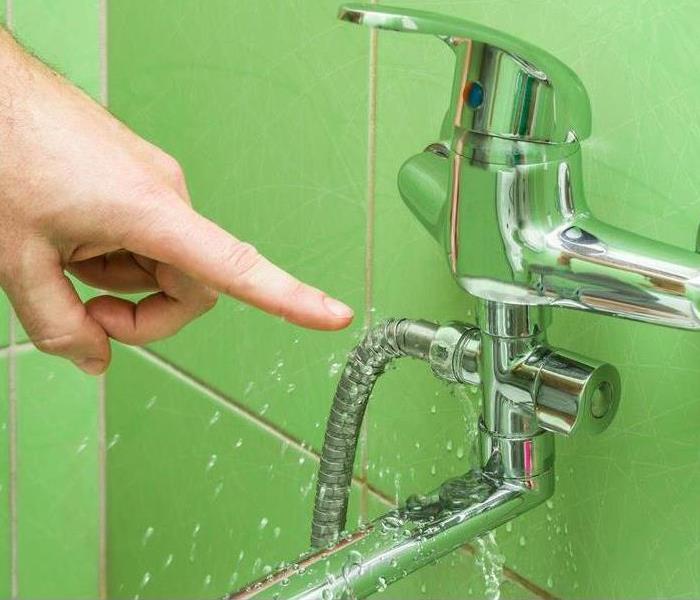How To Deal with Leaking Bathroom Supply Lines
1/20/2020 (Permalink)
The supply lines in your home play the important job of providing water to fixtures and appliances such as sinks, washing machines, or toilets. One of the main causes of a bathroom leak is supply line damage, which can often be prevented by replacing broken lines before they cause water damage. Use this guide if you are running into issues with your bathroom’s water supply lines or plan on replacing them soon.
Replacing Supply Lines
If you notice a supply line leak, you should immediately have the affected supply lines replaced. Problems to look out for include:
Pooling water
Dripping on walls
Rust
Corroded piping
Punctures or cracking
You should also replace supply lines if you are making renovations and installing a new faucet or toilet or if your supply lines are old and outdated.
Addressing Water Damage
It is not uncommon for large leaks to happen unexpectedly and result in extensive water damage. If this happens to you, turn off your water supply and contact a water damage restoration company in Whitemarsh, PA, right away to avoid any further issues.
Choosing New Supply Lines
There are several different materials to choose from when buying new supply lines including plastic, copper, and braided stainless steel. While plastic is often the cheapest choice, it is the most prone to supply line damage. Copper is a more durable material, but you will need to watch out for signs of electrolysis, or galvanic metal corrosion. Many people opt for braided steel supply lines, which are considered a more durable choice and often have a lifetime warranty. However, even these types of supply lines can run into issues and should be examined for signs of deterioration or leaking.
Knowing when to change your supply lines can keep you from dealing with costly leaks. Always contact a professional if you are unsure which type of material is best for your needs or need help identifying common signs of supply line damage.





 24/7 Emergency Service
24/7 Emergency Service
